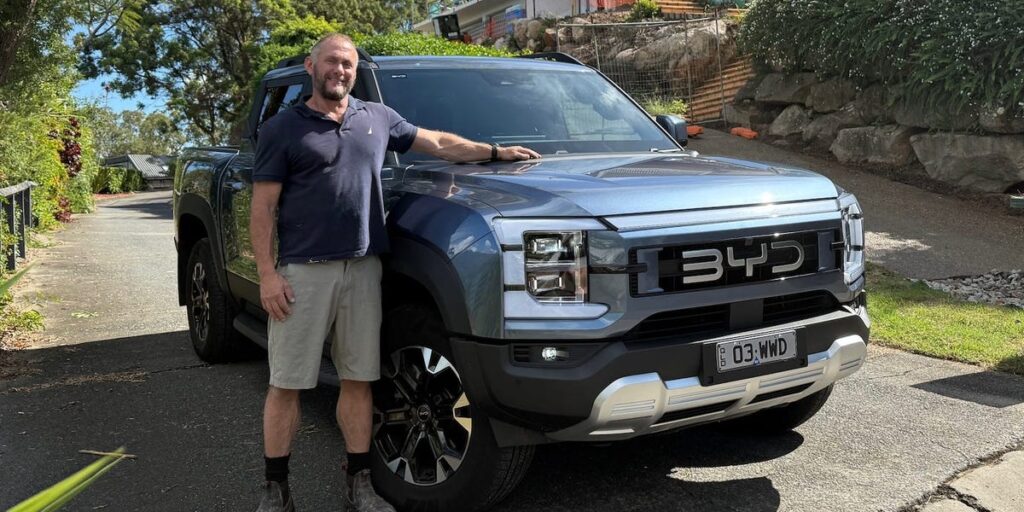This as-told-to essay is based on a conversation with Wayne Dopson, a project manager in Brisbane, Australia, about his experience owning a BYD Shark hybrid pickup truck.
I’ve been involved in the property market for over a decade, flipping houses and managing renovations. I run a small renovation business that focuses on kitchens, bathrooms, and decks for clients in Brisbane.
In 2015, I purchased a VW Amarok diesel pickup. Although I wanted to upgrade, I couldn’t find a truck that really captured my interest. Other combustion-engine models, like the Ford Ranger, were simply variations of the Amarok, so I held out for something more distinctive.
In March, I decided to buy the BYD Shark hybrid pickup for 64,000 AUD (approximately $41,000). Traditional brands like Ford and Toyota have inflated prices for their pickups; some models reach 80,000 AUD, which seems unreasonable when compared to BYD’s offering.
I’ve driven the Shark for about 2,000 kilometers so far and am still getting used to its features, but I already love it. The advanced technology, power, and smooth handling make it feel light-years ahead of the Amarok.
The interior luxury is impressive for the price — comparable to my previous Audis and BMWs. It accelerates from 0 to 100 km/h in 5.7 seconds, delivering a sports car-like performance.
I mainly use the Shark for work and leisure, and it provides some significant work-related advantages. Operating costs are incredibly low. With 30 solar panels on my roof, I generate free electricity during the day. I pay just eight cents per kilowatt-hour during the night to charge it, which takes about three to four hours, costing less than two AUD (around $1.03). In comparison, the diesel costs for the Amarok used to run upwards of 14 AUD daily.
Another advantage is the Shark’s power outlets in the back, which supply about six kilowatts, perfect for powering tools on job sites.
The Shark has a spacious tray and convenient features like a tailgate that opens with a button press, making it user-friendly when your hands are full.
As an Extended Range Electric Vehicle (EREV), the Shark employs two electric motors and a 1.5-liter turbo petrol engine that functions as a generator. This eliminates range anxiety for me; I typically drive less than 100 kilometers a day on electric mode, but the petrol engine provides reassurance for longer trips, offering a total range of about 800 kilometers.
One concern is its resale value, particularly with new models emerging rapidly from brands like Nissan, Ford, and Great Wall. The quick pace of technology advances may render my Shark outdated in just a few years. It comes with a six-year warranty, and I plan to keep it throughout that period; how much it retains in value afterward is uncertain.
In my view, the introduction of more Chinese EV brands like BYD is a positive development for Australia, bringing longer warranties and higher quality vehicles. Utes play an essential role in Australian culture, but the Shark might struggle off-road compared to vehicles with more robust features. It performs well in sand and mud, but challenging terrains may pose difficulties.
Nonetheless, the Shark suits my needs perfectly. It’s a joy to drive, and I appreciate that it’s both budget-friendly and environmentally conscious.


